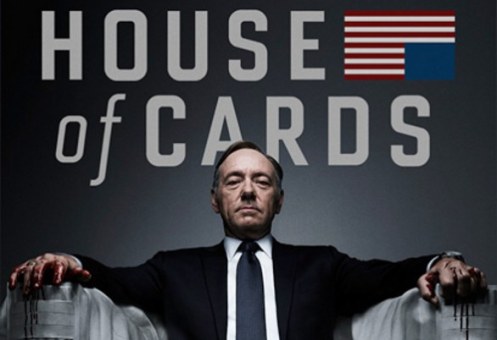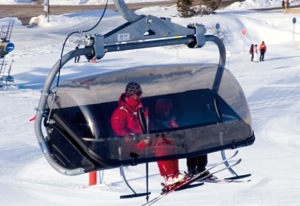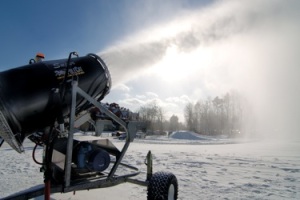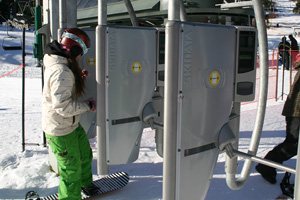It all started October 6, 2004. That was the historic day Howard Stern announced he was moving from terrestrial radio to Sirius. Only his listeners knew, as that was how the information was released. In a way, it was insider trading. I arrived at my office moments later, and the first thing I did was call my stockbroker and buy what I could afford. That weekend, I bought and installed Sirius Satellite Radio for my car (for $299), with a lifetime subscription (for “just” $399). It’s now nine years later. It’s worked out to about $6.50 a month (and going down). And I could never go back to regular radio, listening to commercials and bad music.
Then, two weeks ago, I was taking my son skiing up to Maine when my car got itself into an accident. The car was totalled. I bought myself a new Ford Fusion, and it came with Sirius pre-installed. My, how times have changed! It even came with a 6-Month Free Trial Subscription. Of course, I didn’t need the free trial, as I was already a lifetime subscriber. I called Sirius to transfer over my service. To my surprise, I was told by Listener Care that:
- I wasn’t allowed to transfer a lifetime subscription to a new device,
- But if I could transfer it, I would need to call back in 6 months after my free trial had expired,
- And that to do so would cost me $75.
What the what?!?!?
Befuddled, I asked to speak with the agent’s supervisor. I explained the situation. I was told the same thing. I asked to speak with the supervisor’s supervisor. I was promptly hung up on.
From here, I sought the help of social media. From my LinkedIn account, I learned I was just 2-Degrees of Kevin Bacon away from the Sirius Director of Subscriber Communications and Engagement. So I emailed him a letter, and I posted this letter on Facebook. And I posted this tweet linking to the letter.
Today, I received a call from a Sirius Listener Care agent who apologized, and transferred my lifetime service to my Ford, at no cost. Just like that. It took about 3 minutes.
I emailed my new friend, the Sirius Director of Subscriber Communications and Engagement, to thank him for getting involved.
He then offered to give me a private tour of the Sirius studios next time I was in NYC. That is the way you manage customer service. I love Sirius, and they have kept a customer for life – after all, that is what I paid for.
If you’ve been watching, you know that House of Cards is a political drama series developed to stream exclusively on Netflix. The 13-episode show features Kevin Spacey as Francis Underwood, the Majority Whip in Washington, D.C. He is an expert at manipulation, and runs the country without anybody even realizing that he’s doing it. I’m two epsiodes in, and it is excellent. This article has ZERO to do with the series, and everything to do with the potential blunder Netflix made to make money from it.
As of January 2013, Netflix has 27.1 million subscribers. And for $7.99 per month, which equates to $95.88 per year, subscribers have access to thousands of movies & TV episodes. Netflix competes with the likes of traditional cable for impressions, as well as OnDemand, Redbox, Hulu, Amazon Instant, and an ever-growing competitive set. Netflix depends on their broad library to retain subscribers month after month. House of Cards is not their first piece of original programming. Their lineup also includes Lilyhammer, a new season of the canceled TV show, Arrested Development, and a few other notable series’. But Netflix’ bread and butter is their breadth of programming. No matter what you want to watch, whenever you want to watch it, Netflix hopefully has it.
The $100 Million Bet
Buying content from other networks is more pricey than ever before. And these shows are shopped around to the highest bidder by their producers. So Netflix felt it could save money by developing their own programming. And they invested fifty million dollars in the series, per year, over two years. And they released all 13 episodes of season 1 in one day – February 1, 2013. And while many people (including me) absolutely love the show, here is why Netflix may be at risk of failing.
1. When you create habit, you create retention.
Netflix is not creating habit by releasing an entire season at once. Netflix should force subscribers to watch the series over time. As one can learn from the declining newspaper business, subscribers who receive a newspaper seven days a week retain at a substantially higher rate than those who receive a newspaper on just Sundays. Why? Because seven-day subscribers read the paper every day. If you take it away for a day, they miss it. Sunday-only readers can miss a day and not miss it. Similarly to watching television, by releasing a series all at once, viewers can watch 13 episodes in a 2-3 weeks and be done with it. No habit has been created to watch Netflix. Now that the series is done, viewers no longer need the service. Good bye – time to watch Season 6 of Dexter at OnDemand you’ve been waiting to catch up on.
2. People like to do things together.
When an epsiode airs, people like to talk about it. Especially in today’s social media world, they tweet it, Facebook it, and even blog about. An episode may have an “original air date,” but the conversation lasts all week – until the next episode. When you drop 13 episodes at once, everybody is on a different schedule. Not only do viewers NOT know who they can talk to about it (because they’re all in different places), they avoid blogs and tweets about it, because the last thing they want to do is read a spoiler on episode 7 by mistake when they’re still on episode 4. Dropping a series all at once risks ruining the community that surrounds original programming.
3. The ROI doesn’t make sense.
Netflix ratings aren’t tracked by Nielson since their revenue comes from subscribers, not advertising. However, let’s compare to Showtime’s Homeland. According to the Hollywood Reporter, Homeland’s season 2 premier reached 2.07 million viewers for the night. Let’s be optimistic and pretend House of Cards matches that. Let’s also assume it takes a viewer two months to watch House of Cards (2 x$7.99 = $15.98), and let’s assume there are 2 million viewers. Then net revenue is just under $32 million. (2,000,000 x $15.98 = $31,960,000) — and that assumes that 100% of viewers are new to Netflix, which they aren’t.
Regardless, cost of the show is $50 million in the first year, so best case, Netflix loses $18 million. And then they need to maintain for season 2 that they’ve already committed to.
But let’s pretend all 2 million viewers are new. And let’s pretend 10% stick around for the year. That’s 200,000 new subscribers, at $95.88 per year. That’s a tad over $19 million. Add that to the $32 million from those who sign up just for the show, and Netflix revenue comes in at $51 million – just a tad over break-even. (For Year 1, anyways).
But the above also assume that House of Cards will A) be as entertaining as a 2012 Primetime Emmy Award winning dramatic series and two-time Golden Globe Award winner for best television series, B) that all viewers of the show will be incremental to the Netflix existing subscriber base, and that C) Netflix will retain 10% of show-specific subscribers after the series ends even though they haven’t trained viewers to watch other network programming. Speaking only for myself, I cancel HBO after each season of new programming concludes!
How Can House of Cards Stay Standing?
Simple.
1. Pull episodes 3 through 13 from the Netflix servers immediately. Subscribers who got a head start will be ambassadors of the show. They will talk about it and motivate others to join in. (Although in reality, it may be too late to do that without causing a PR nightmare — whoops!).
2. Then release an episode per week. After viewers watch the show each week, they will explore Netflix and the deep programming it has. Viewers will form habit. Add live tweeting along each episode with hashtags. Let viewers discuss the show they are watching, as they are watching it, with the community. If it’s too late for season 1, do it this way in season 2.
3. Lastly, have another new show ready to go as soon as epsiode 13 is complete. Don’t let viewers break their habit. Keep feeding it. Make them want more.
And that is how you grow subscribers, and make revenue. Might be too late to do this now, as the hand’s already been dealt.
There is no doubt in my mind that House of Cards will be a pleasingly entertaining show. It may even win awards. I just hope the awards aren’t so heavy they cause Netflix to sink.
After spending the last two days skiing Mount Snow in Vermont, I fully appreciate everything they do to get you up and down the mountain. Yet, while bundled up with traditional ski gear, I never leave home without my marketing hat. During my trip, I picked up several enhancements the resort could make to increase their attendance, and positively influence their user experience. I will provide my Top 5.
Technologies that help what goes up, come down
Before I jump into what Mount Snow could do to improve, I thought I’d recognize what they are already doing to help you get up and down the mountain.
Going Up – The Bubble Lift
In 2012, Mount Snow introduced The Blue Bird Express, a bubble chair that is claimed to be the only of it’s kind in America. This high-speed six-passenger cuts ride time in half from its predecessor. More important, this new lift’s chair looks like a conventional chairlift, but has padded seats and a plastic shield, or bubble, that encloses the chair. As a result, there is no wind during your journey up the slope, and the enclosure allows skiers to arrive at the peak nice and warm. With this lift, Mount Snow now has a total uphill capacity of 8,100 skiers per hour, making for more skiing and less waiting in line.
Going Down – Fan Guns
Mount Snow has a philosophy that providing the best trail conditions is of the utmost importance, and that the quality of snow on the top surface has to meet high standards. That, coupled with rising diesel prices, has caused the resort to invest in 251 fan guns, the largest fleet in North America. Since installing the fan guns throughout the resort, even when supplemented by more than 800 traditional air/water guns, Mount Snow uses an average of 200,000 less gallons of diesel fuel every year than it had – all while assuring that trails have a more consistent surface for skiing and riding.
A skiing and riding experience is more than the mountain
With the perfection of going up and down, I still noticed several opportunities for Mount Snow to drive more skiers and riders to mountain, improve the user experience, and generate incremental revenue.
1. Make Singles Line a Premium Service
It is commonly known that the Singles Line is the “legalized cutting line.” If a ski lift holds four passengers, and you have a party of three, the singles line is intended to give you the fourth passenger, so that each lift goes up full. Since the singles line often moves double or triple the speed of other lines, many enter the singles line willing to be separated from their partner(s) for the shorter line – and they often end up on the same lift anyhow (if the group they join needs multiple singles). This legalized cutting is estimated to give a skier an extra 4 or 5 runs a day, which could equate to 20% more runs overall.
The idea: Charge skiers for a day pass to the singles line.
Rationale: Skiers should pay a premium for a quicker ride, and those who opt to ski in groups won’t feel as alienated for their longer wait times.
2. Eliminate Ticket Scanning
At the base of each lift, a staffer scans the barcode on your ticket. However, since the line moves faster than the ticket scanner, by my humble estimate, somewhere between 25% and 40% of tickets are unscanned – especially during crowded times. As a result, the resort does not gain an accurate count of how many rides are actually taken in the day – and skiers aren’t able to obtain their ski data to check out their performance.
The idea: Charge skiers for a transponder, similar to the E-Z Pass that drivers use on a highway. Mountain Pass Systems is already leveraging radio frequency identity (RFID) technology to provide ski lift access, so this technology is available today.
Rationale: With a transponder, ticket checkers are no longer needed, thus reducing staff payroll. Plus, the mountain will have a near-100% accurate count of riders throughout the day. And experiencially, riders will be able to check online to see how many rides they took throughout the day or season, as well as track their distance skied, and other fun and interesting metrics. Not to mention, now skiers can buy food in the lodge without digging their wallet out of their snow pants, charging directly to the account linked to their transponder.
3. Improve the User Experience with a Customized App
There are no shortage of ski apps. For instance, apps like Ski Tracks or AlpineReplay both record your distance skied, speed, altitude and slope angle, as well as the runs and vertical feet you’ve covered. The challenge with ski apps is the cellphone service often doesn’t work well on mountains, and using roaming will drain your battery long before your ski day is over. Plus, a given mountain gets no benefit if an app works at every ski resort there is.
The idea: Leverage a transponder built into your ski ticket (see #2 above) to automatically track the slopes you ride, your ski times, and more than a generic app ever could.
Rationale: No app is needed, since a skier’s personal information can be built directly into their ski pass. Thus, all a user needs to do is go online, login to their account, and check out their performance, and that of their friends.
4. Leverage Email Capture to Build a Relationship with Skiers
It surprised me that when I bought my lift ticket at the resort, I was not asked for my name, address, email address, or phone number. I’m sure those who purchase online provide this info, but no data was captured when I purchased on site.
The idea: Capture skier information at point of sale and integrate into the customer database.
Rationale: With a complete picture of who is skiing your mountain, it becomes easier to prospect potential future customers in the future. Plus, you can build a relationship with those who ski with you today. For instance, I returned from skiing Mount Snow today. I could have had a ‘Thank You’ email waiting for me along with my ski results from the day. Plus, this email could contain a link for a short survey so that the resort can learn from those who are fresh off an experience, without having to pay for market research.
5. Charge for Once-in-a-Lifetime Photos & Videos
Fanfoto and other similar services exist at practically every sports arena and family attraction. Yet, anybody with a cellphone rarely needs these services anymore – except in instances where photos can’t be easily captured – such as on a freezing cold, snowy, steep and windy mountain location. Plus, these services do not capture video.
The idea: Capture photos and video where individuals can’t do it themself, such as coming off a lift, hitting a jump, or in the middle of hitting that mogul on a trail with a scenic background. This can either be done with paid professionals, or affixed cameras on sensor. Then, link each photo to the barcode on the skier’s ticket or from their transponder (see #2 above) so that the customer can easily find their photos at home tied to their account.
Rationale: These unique photos and video have no other way to be captured. And while ski-helmet cams are taking off in popularity, the only person not in these photos is the skier! Instead of charging per picture, users would be much more likely to pay a small daily fee for unlimited photos and video from their rides if they are charged at point of sale when they purchase their lift pass. Disney PhotoPass charges $44.95 for two-weeks’ worth of photos across their various properties!
All of these ideas leverage technology available today, and are fairly easy to implement. And while some skiers may chose a mountain based on a bubble lift that can save 7 minutes, others may chose a mountain that will provide memories for a lifetime.









